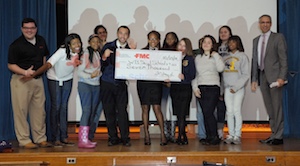 Monsanto has announced a $20 million investment in integrated technology centers as part of its global breeding program that will help feed a hungry, growing world. This company news release says these tech centers will use continuing advancements in data science, genomic breeding methods and predictive analytics to further enhance seeds and unlock untapped yield potential.
Monsanto has announced a $20 million investment in integrated technology centers as part of its global breeding program that will help feed a hungry, growing world. This company news release says these tech centers will use continuing advancements in data science, genomic breeding methods and predictive analytics to further enhance seeds and unlock untapped yield potential.
“We are at a unique inflection point in the evolution of plant breeding where data science and predictive analytics will help to unlock previously untapped potential of plant genetics,” said Sam Eathington, Monsanto vice president of global plant breeding. “Monsanto is committed to continue to deliver new agricultural solutions through plant breeding so that farmers can keep up with the growing demands of food production in the face of population growth and climate change.”
Monsanto utilizes its broad network of breeding and field testing locations, global germplasm library and advanced technologies to develop better products for farmers. And with today’s announcement, the company highlighted its commitment to invest $20 million over the next two years to accelerate plant breeding research across integrated technology centers in Illinois, Indiana, Iowa, Maryland, Minnesota and Nebraska. These integrated technology centers will enable the company to combine some local operations, utilize new advancements and discoveries, as well as share best practices across crop research.
Monsanto officials go on to say that advanced plant breeding techniques and data science are key elements that work together to contribute to a food-secure future.









